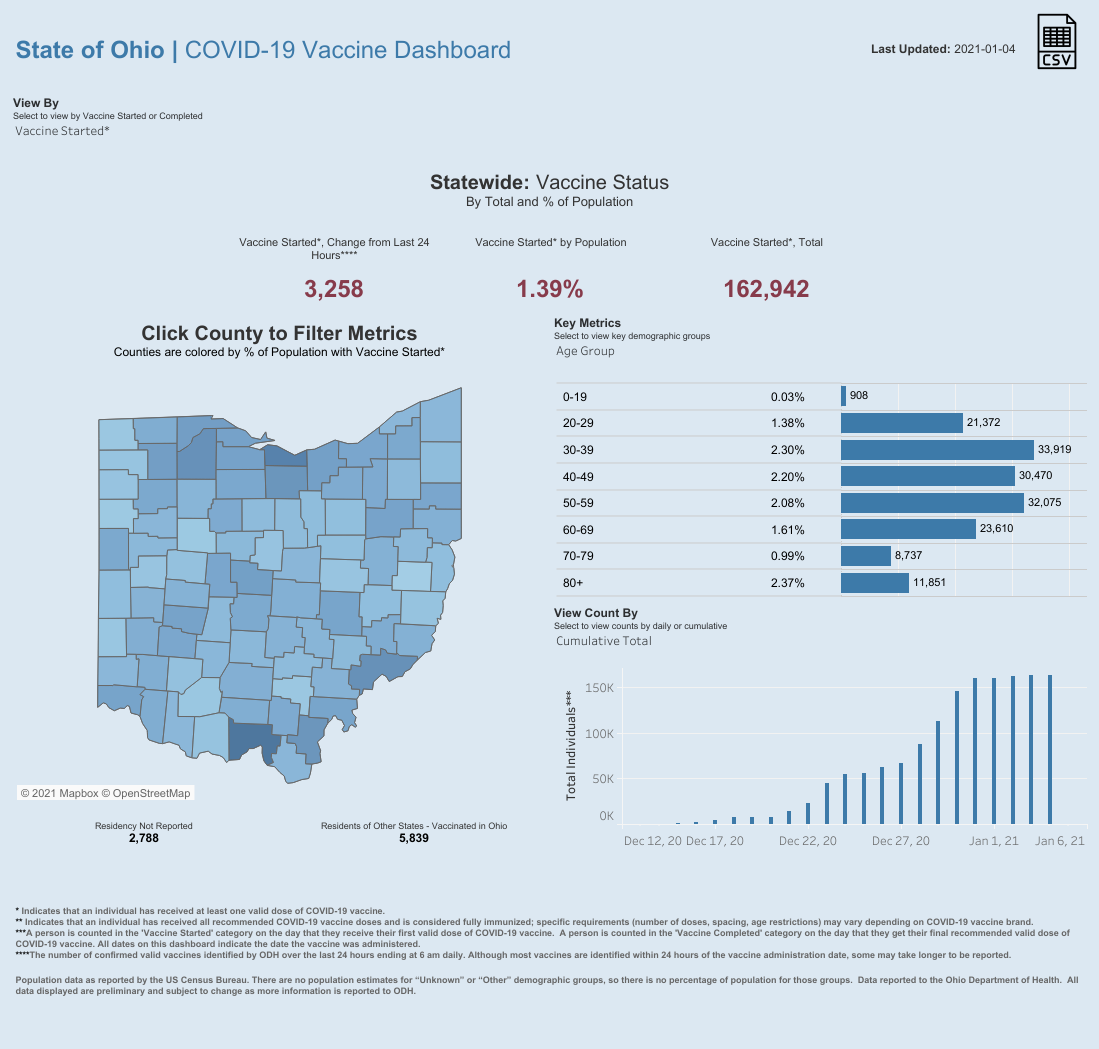CLEVELAND — After what Gov. Mike DeWine characterized last week as a slow start to the COVID-19 vaccine rollout across Ohio, the inoculation effort has started to pick up steam, according to state vaccination data. In less than a week, the number of Ohioans to receive the vaccine has more than doubled to just over 162,000.

Although the total number of people vaccinated still accounts for only a small part of the population, the progress reflects a positive turning point in the creation of the infrastructure needed to keep the largest vaccination effort in state and US history moving. The vaccination progress made on the state level is also mirrored on the local level, said Dr. Dan Simon of University Hospitals.
“I think we have really picked up a head of steam now. We will exhaust our first vaccine allocation by Thursday,” Dr. Simon said. “We will have vaccinated over 14,000 healthcare workers by Thursday.”
The state of Ohio received and shipped a total of 341,000 first doses of the Moderna vaccine and nearly 10,000 first doses of the Pfizer vaccine. Ohio has also recently shipped nearly 10,000 doses of the second round of the Pfizer vaccine. The remaining 170,000 vaccines the state has distributed have been designated as part of the long term care program.
Last week, Gov. DeWine implored health departments and hospital systems to increase the rate at which people are vaccinated, stressing that it was their ‘moral imperative' to move as quickly as possible.
“We call it around here ‘go slow to go fast.’ You want a deliberate method that gets the glitches out before you open the doors,” Dr. Simon said. “It's like that saying, ‘measure twice, cut once.’ If you are careful upfront and you get it right, you can really power through. Today, we’ll do 1,800 (vaccinations) across the health system.”
Health leaders across the state and nation have stressed that the initial rollout of the vaccine is one of the largest logistical endeavors in recent memory. In addition to shipping and storing the vaccines, which require special refrigeration considerations, the logistics involved in distributing the doses rely simply on having the vaccine available, Dr. Simon said.
“The critical thing from a health system standpoint is vaccine delivery. You can’t schedule appointments — it’s a logistical nightmare — to just cancel them if you don’t have the vaccines on hand,” Dr. Simon said. “Having vaccine in hand is the critical piece right now. The disappointing issue is vaccinating 20 million people by Dec. 31st just didn’t happen because there weren’t 20 million doses.”
The actual vaccination process also includes a 15-minute observation period for people with no history of allergic reactions. A 30-minute observation period is required for those with histories of severe allergic reaction.
In a virtual press briefing on New Year’s Eve, Cuyahoga County Health Commissioner Terry Allan stressed that the initial rollout of the vaccination effort will come with some ‘bumps in the road,’ but the agency has grown accustomed to working with its partners. As of Monday, more than 18,000 people have been vaccinated, according to state data. The CCBH received its allotment of 4,000 Moderna vaccines just before Christmas.
“We’ve never done this type of pandemic response for vaccination. It’s been 100 years,” Allan said. “We’re learning and building as we go along. It’s going to require patience from all of us.”



